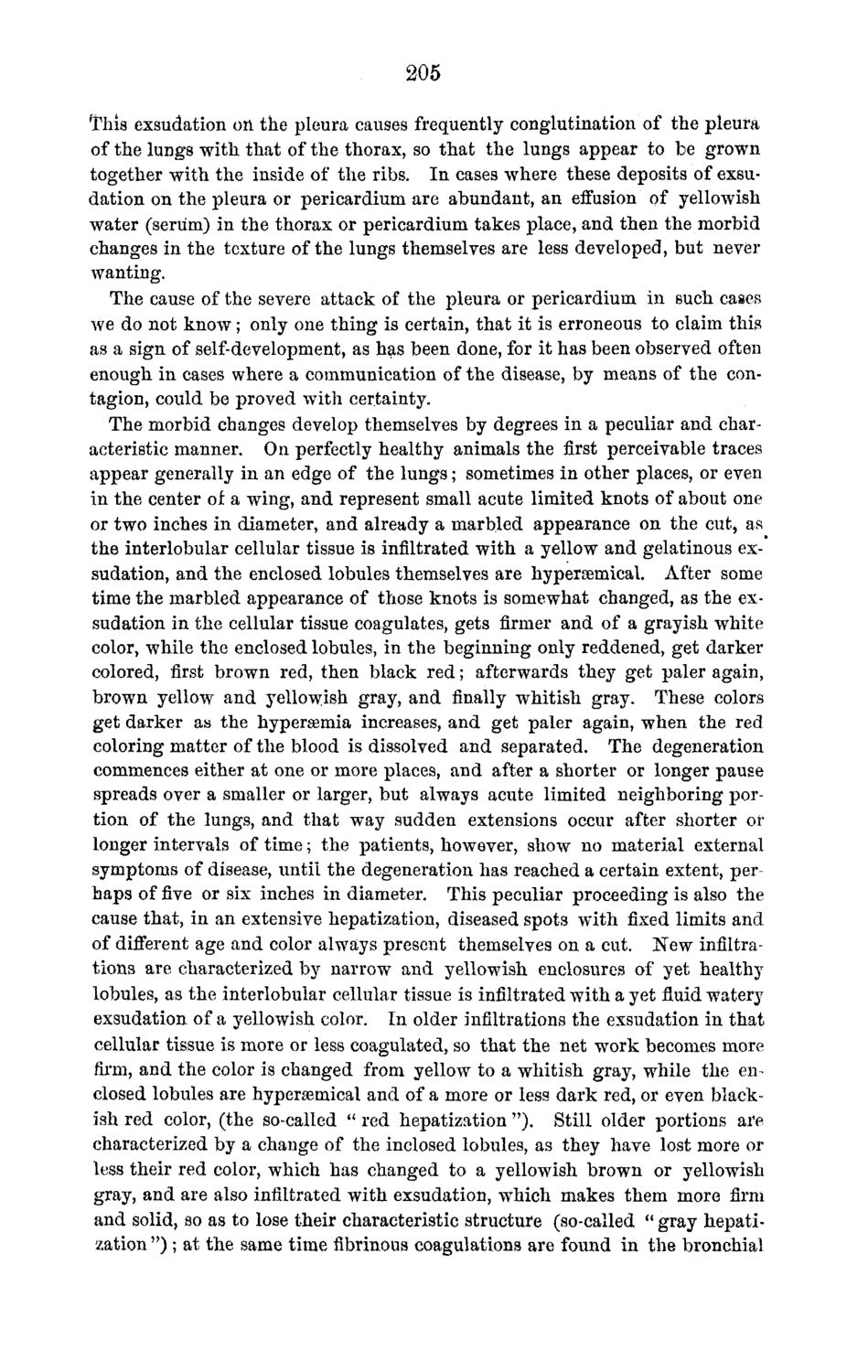| |
| |
Caption: Board of Trustees Minutes - 1870
This is a reduced-resolution page image for fast online browsing.

EXTRACTED TEXT FROM PAGE:
205 This exsudation on the pleura causes frequently conglutination of the pleura of the lungs with that of the thorax, so that the lungs appear to be grown together with the inside of the ribs. In cases where these deposits of exsudation on the pleura or pericardium are abundant, an effusion of yellowish water (serum) in the thorax or pericardium takes place, and then the morbid changes in the texture of the lungs themselves are less developed, but never Avanting. The cause of the severe attack of the pleura or pericardium in such cases we do not know; only one thing is certain, that it is erroneous to claim this as a sign of self-development, as has been done, for it has been observed often enough in cases where a communication of the disease, by means of the contagion, could be proved with certainty. The morbid changes develop themselves by degrees in a peculiar and characteristic manner. On perfectly healthy animals the first perceivable traces appear generally in an edge of the lungs; sometimes in other places, or even in the center of a wing, and represent small acute limited knots of about one or two inches in diameter, and already a marbled appearance on the cut, as the interlobular cellular tissue is infiltrated with a yellow and gelatinous exsudation, and the enclosed lobules themselves are hypersemical. After some time the marbled appearance of those knots is somewhat changed, as the exsudation in the cellular tissue coagulates, gets firmer and of a grayish white color, while the enclosed lobules, in the beginning only reddened, get darker colored, first brown red, then black red; afterwards they get paler again, brown yellow and yellowish gray, and finally whitish gray. These colors get darker as the hyperemia increases, and get paler again, when the red coloring matter of the blood is dissolved and separated. The degeneration commences either at one or more places, and after a shorter or longer pause spreads over a smaller or larger, but always acute limited neighboring portion of the lungs, and that way sudden extensions occur after shorter or longer intervals of time; the patients, however, show no material external symptoms of disease, until the degeneration has reached a certain extent, per haps of five or six inches in diameter. This peculiar proceeding is also the cause that, in an extensive hepatization, diseased spots with fixed limits and of different age and color always present themselves on a cut. New infiltrations are characterized by narrow and yellowish enclosures of yet healthy lobules, as the interlobular cellular tissue is infiltrated with a yet fluid watery exsudation of a yellowish color. In older infiltrations the exsudation in that cellular tissue is more or less coagulated, so that the net work becomes more firm, and the color is changed from yellow to a whitish gray, while the enclosed lobules are hyperaemical and of a more or less dark red, or even blackish red color, (the so-called " red hepatization "). Still older portions are characterized by a change of the inclosed lobules, as they have lost more or less their red color, which has changed to a yellowish brown or yellowish gray, and are also infiltrated with exsudation, which makes them more firm and solid, so as to lose their characteristic structure (so-called " gray hepatization ") ; at the same time fibrinous coagulations are found in the bronchial
| |